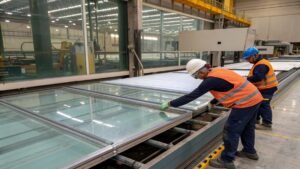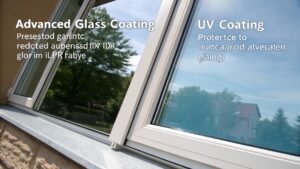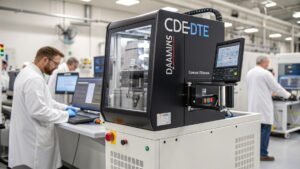High-volume insulated glass production demands equipment that eliminates bottlenecks. One slow machine can halt your entire production line and cost thousands daily.
The best machines for high-volume insulated glass production include automated sealant application systems, dual-seal IG lines with butyl and structural glazing, spacer bending machines, and integrated glass washing systems. These achieve production rates of 800-1200 units daily with 99.5% seal integrity.
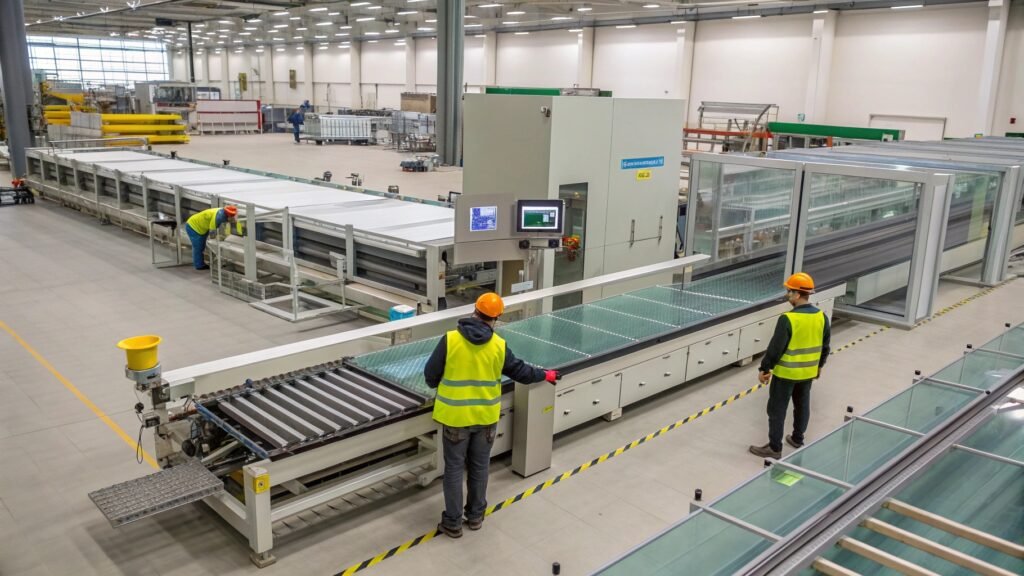
After working with glass manufacturers across different scales, I have learned that volume production requires different thinking than custom work. Many companies struggle when scaling up from small batch to industrial production. The key lies in selecting machines that work together as an integrated system rather than individual components.
What automated sealant application systems deliver consistent sealing quality?
Automated sealant systems eliminate human error in the most critical part of insulated glass production. Consistent sealant application determines the lifespan of your finished units.
Automated sealant application systems use precision pumps and robotic dispensing heads to apply primary butyl sealant and secondary structural sealant. They achieve ±0.5mm bead consistency, handle multiple sealant types simultaneously, and integrate quality control sensors for 100% inspection coverage.
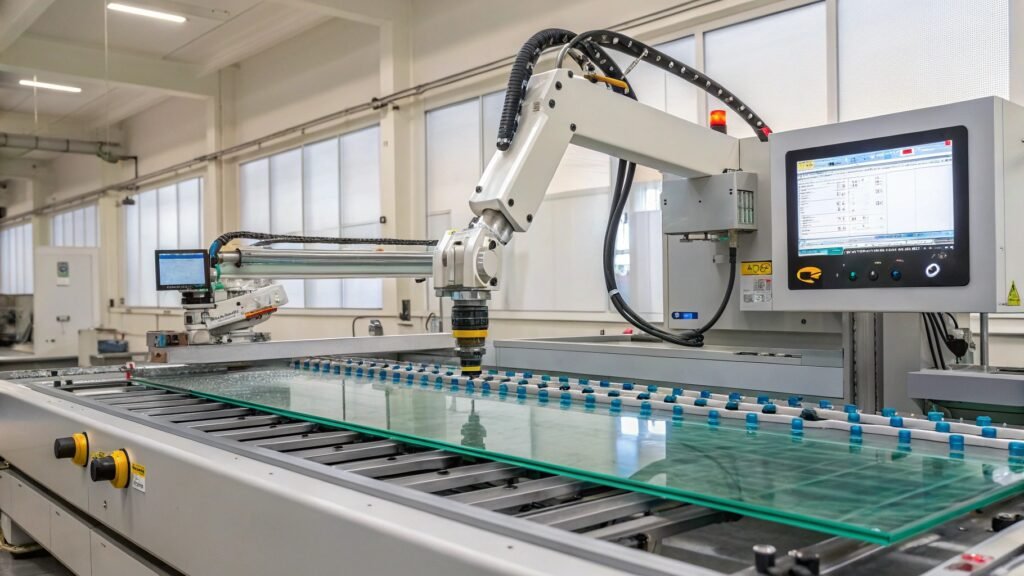
The top systems from companies like Lisec and Forel feature dual-component mixing1 with real-time ratio monitoring. These machines prevent the seal failures that plague manual operations. I worked with a manufacturer who reduced warranty claims by 85% after installing automated sealant application.
Temperature control becomes critical for sealant consistency. Premium systems maintain sealant temperature within ±2°C throughout the entire process. This ensures proper flow characteristics and curing properties across different ambient conditions.
Quality monitoring systems2 use laser measurement to verify bead width, height, and position. Rejections happen automatically before the unit moves to the next station. This prevents downstream processing of defective units that would waste materials and labor.
Multi-zone heating systems cure sealants at optimal temperatures. Different sealant types require specific temperature profiles. Advanced systems program these profiles automatically based on the selected sealant chemistry and glass thickness combination.
| Feature | Standard System | Premium System | Industrial System |
|---|---|---|---|
| Sealant Types | 2 | 4 | 6+ |
| Bead Accuracy | ±1.0mm | ±0.5mm | ±0.3mm |
| Production Speed | 30 units/hour | 60 units/hour | 100+ units/hour |
| Quality Control | Manual | Semi-Auto | Fully Automated |
How do dual-seal IG production lines maximize throughput efficiency?
Dual-seal systems apply both primary and secondary seals in a continuous process. This integration eliminates handling between separate sealing operations.
Dual-seal IG lines combine butyl primary sealant application with structural glazing in one continuous process. They achieve cycle times under 3 minutes per unit, handle glass sizes up to 3000x6000mm, and maintain working life standards exceeding 25 years through precise sealant control.
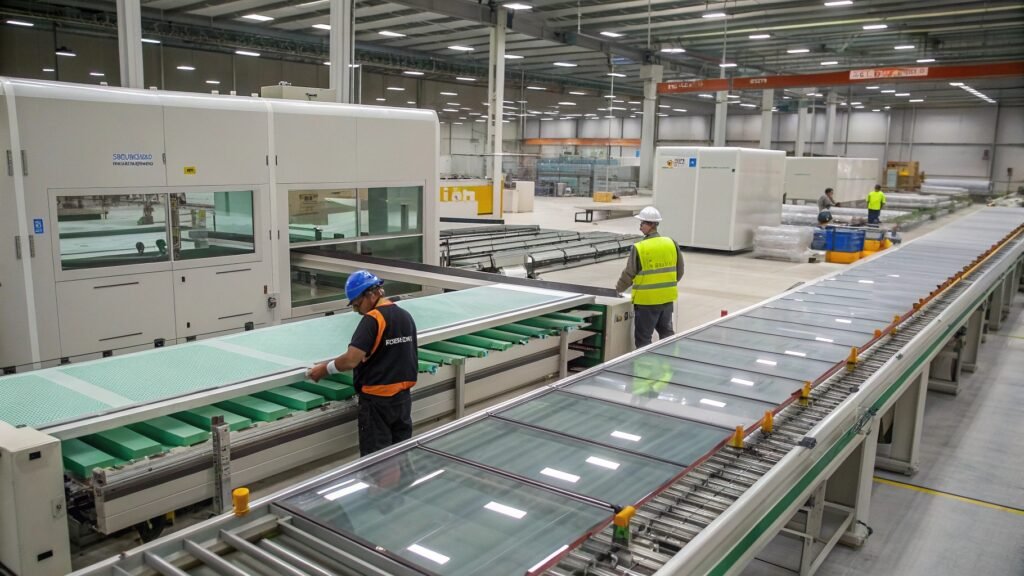
Bystronic and Cardinal IG lead the market with integrated dual-seal systems3. These lines eliminate the bottleneck between primary and secondary sealing that limits many production facilities. The continuous process reduces handling damage and improves overall cycle times.
Process integration requires precise timing between stations. The primary sealant must reach proper tack before secondary sealant application. Advanced systems monitor sealant properties in real-time and adjust process timing automatically.
Glass positioning accuracy becomes more critical in high-speed operations. Servo-driven positioning systems maintain ±0.5mm accuracy throughout the sealing process. This precision ensures consistent seal geometry and prevents stress concentrations that cause premature failures.
Material handling systems move heavy IG units smoothly between process stations. Air cushion conveyors support units weighing up to 200kg while maintaining gentle handling. The continuous flow eliminates start-stop motions that can stress the glass assemblies.
Our coating equipment often integrates with these production lines for specialty architectural glass applications. The combination produces high-performance IG units with advanced optical properties for energy-efficient buildings.
| Line Configuration | Units/Hour | Max Size (mm) | Crew Required |
|---|---|---|---|
| Semi-Automatic | 15-25 | 2500×3500 | 4-6 operators |
| Fully Automatic | 40-60 | 3000×5000 | 2-3 operators |
| High-Speed Auto | 80-120 | 3000×6000 | 1-2 operators |
Which spacer bending and assembly machines handle complex geometries?
Modern architecture demands IG units with curved edges and complex shapes. Spacer bending machines must handle these requirements while maintaining production speed.
Advanced spacer bending machines use servo-controlled forming heads to create precise bends in aluminum and warm-edge spacer materials. They handle radii down to 6mm, process spacer widths from 6mm to 24mm, and integrate molecular sieve filling with corner key insertion automatically.
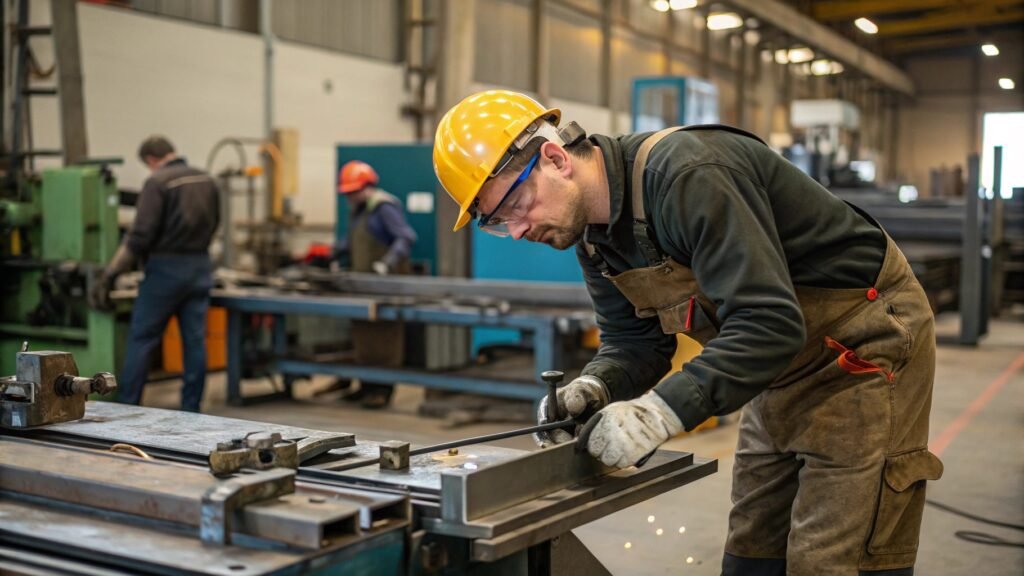
Lisec and Hegla manufacture leading spacer equipment that handles both standard rectangular and complex curved geometries. These machines eliminate the manual labor traditionally required for specialty shapes while maintaining the precision needed for proper seal performance.
Servo-controlled bending heads adjust forming pressure based on spacer material and bend radius. Aluminum spacers require different forming parameters than warm-edge materials like TPS or Super Spacer. The machines store programs for different material combinations and recall them automatically.
Molecular sieve filling happens during the bending process for maximum efficiency. Precise metering ensures consistent desiccant quantities while preventing overfill that can interfere with corner assembly. Integrated vibration systems distribute the desiccant evenly throughout the spacer length.
Corner key insertion requires precise timing and positioning. Pneumatic insertion systems place keys while the spacer material is still held in the forming fixture. This ensures proper alignment and prevents gaps that compromise seal integrity.
Quality control systems verify bend angles, corner alignment, and desiccant fill levels. Laser measurement confirms dimensional accuracy before releasing the completed spacer frame. Rejected units are automatically sorted for rework or disposal.
| Spacer Type | Min Radius | Bending Speed | Fill Accuracy |
|---|---|---|---|
| Aluminum | 8mm | 15 m/min | ±2% |
| Warm Edge TPS | 6mm | 12 m/min | ±1.5% |
| Super Spacer | 10mm | 18 m/min | ±2.5% |
| Stainless Steel | 12mm | 10 m/min | ±1% |
What glass washing systems ensure optimal adhesion for high-speed sealing?
Clean glass surfaces are essential for proper sealant adhesion. Contamination from handling, storage, or processing can cause seal failures years after installation.
High-speed glass washing systems use multi-stage cleaning with deionized water, heated air knives, and contamination detection sensors. They process units up to 6 meters long at speeds of 3-5 meters per minute while achieving surface cleanliness levels suitable for structural glazing applications.
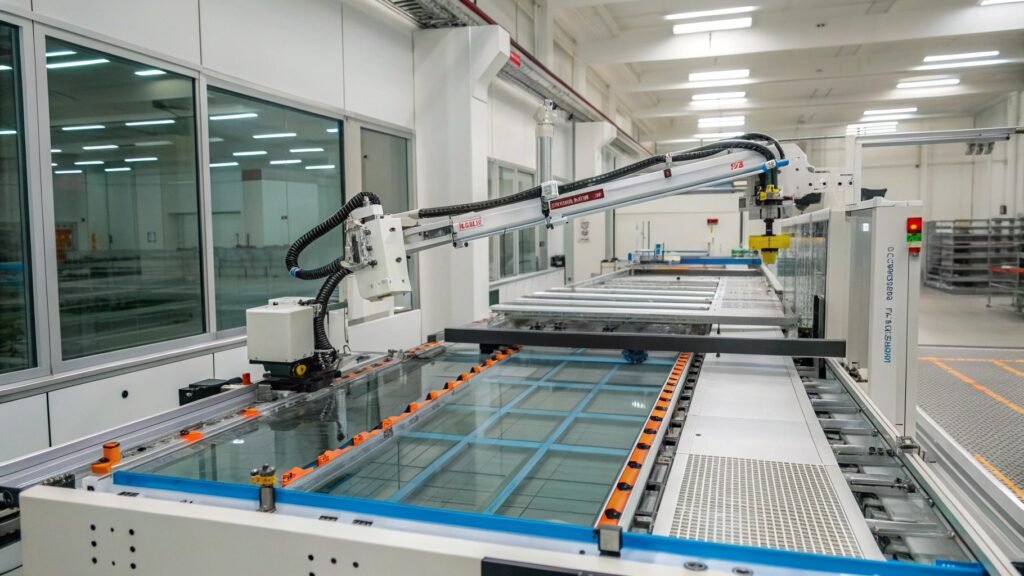
Hegla and For.el produce washing systems designed specifically for high-volume IG production. These systems integrate with our photovoltaic glass processing lines where surface cleanliness is critical for coating adhesion and optical performance.
Multi-stage washing removes different types of contamination through targeted cleaning methods. Initial stages remove loose particles and handling residue. Intermediate stages use heated cleaning solutions to dissolve adhesive residues and fingerprints. Final stages rinse with deionized water and dry with heated air.
Water quality monitoring ensures consistent cleaning performance. Conductivity meters track deionized water purity and trigger regeneration cycles when needed. pH monitoring prevents alkaline buildup that can leave residues on the glass surface.
Contamination detection systems use high-intensity LED arrays and digital cameras to identify defects after washing. Pattern recognition software distinguishes between acceptable and rejectable contamination levels. Units exceeding cleanliness standards are automatically diverted for rewashing.
Drying systems remove all water residue without leaving spots or streaks. Heated air knives create laminar airflow across the glass surface. Temperature and velocity control prevents thermal stress while ensuring complete drying before sealant application.
How do integrated quality control systems maintain production standards?
Quality control integration throughout the production line prevents defective units from reaching customers. Real-time monitoring catches problems before they affect multiple units.
Integrated quality control systems use laser measurement, pressure monitoring, and optical inspection to verify seal integrity, dimensional accuracy, and surface quality. They achieve 99.8% defect detection rates while maintaining production speeds above 50 units per hour through automated inspection processes.
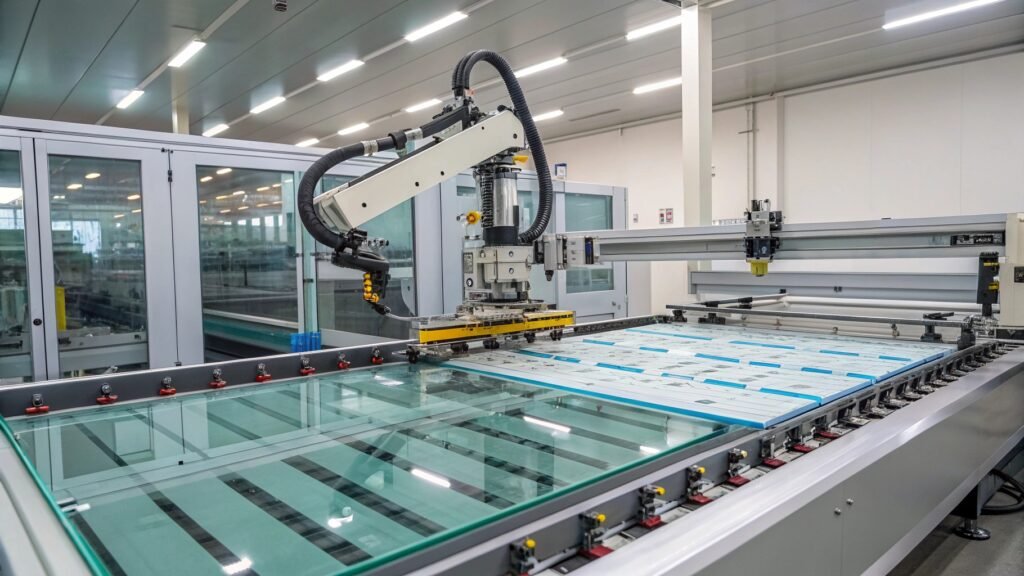
Vision systems inspect completed IG units for seal continuity, dimensional accuracy, and optical defects. High-resolution cameras capture images that software analyzes for defects invisible to human operators. Statistical process control4 tracks trends and predicts potential problems before they occur.
Pressure testing verifies seal integrity without damaging the completed units. Non-destructive testing methods apply controlled pressure differentials and monitor for leakage. Units that fail pressure testing are automatically rejected and marked for analysis.
Our experience with thin film solar manufacturing shows how integrated quality systems prevent costly downstream failures. The same principles apply to IG production where seal failures can result in expensive warranty claims years after installation.
Data collection systems track every process parameter for each unit produced. This traceability enables rapid problem identification when field failures occur. Production data helps optimize process parameters and predict maintenance requirements.
Automatic rejection systems remove defective units without stopping the production line. Servo-controlled diverter gates route rejected units to a separate area for analysis and rework. This maintains continuous flow while ensuring zero defects reach the packaging area.
| Inspection Type | Detection Rate | Speed Impact | Cost per Unit |
|---|---|---|---|
| Visual Only | 85% | None | $0.50 |
| Automated Vision | 95% | 5% slower | $1.20 |
| Full Automated | 99.8% | 10% slower | $2.80 |
| Manual + Auto | 99.9% | 25% slower | $4.50 |
Conclusion
High-volume insulated glass production requires integrated systems that combine automated sealing, quality control, and material handling to achieve consistent output while maintaining seal integrity standards.
-
Explore how dual-component mixing enhances sealant application efficiency and reduces errors. ↩
-
Learn how quality monitoring systems can significantly reduce waste and improve product quality. ↩
-
Explore this link to understand how integrated dual-seal systems enhance efficiency and quality in glass production. ↩
-
Learn about the importance of Statistical process control in maintaining high-quality standards and preventing defects in manufacturing. ↩



